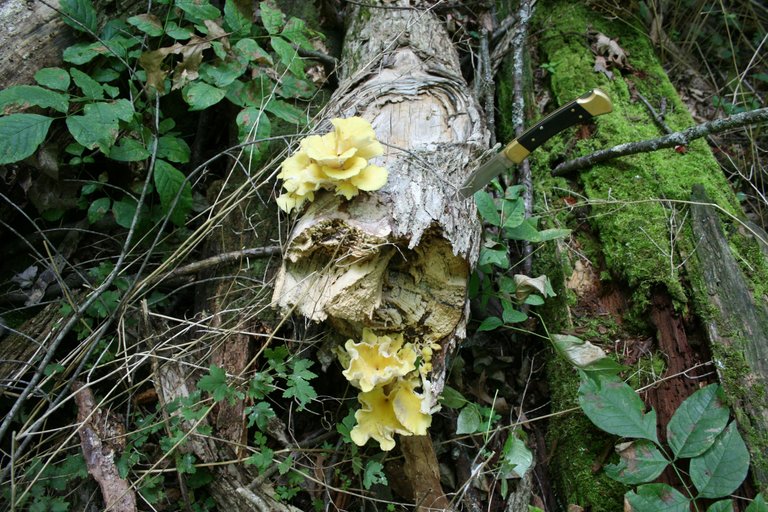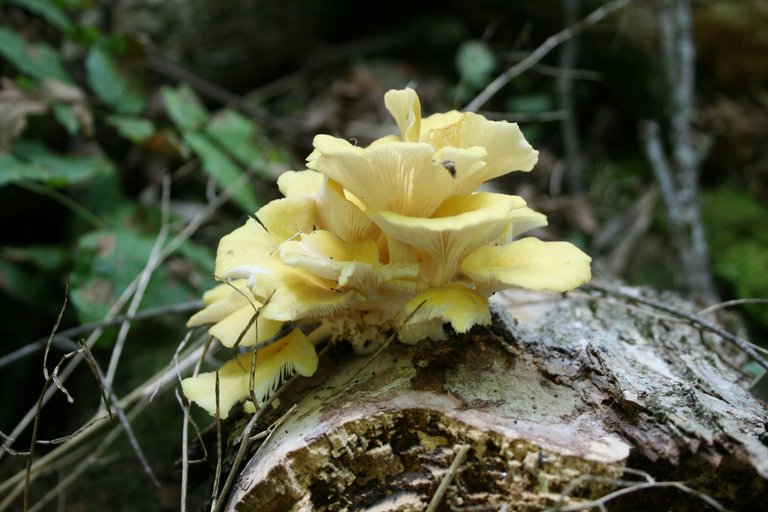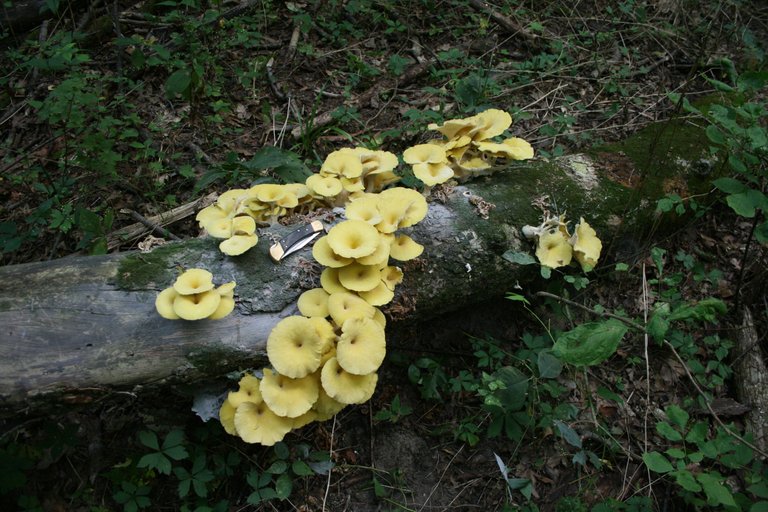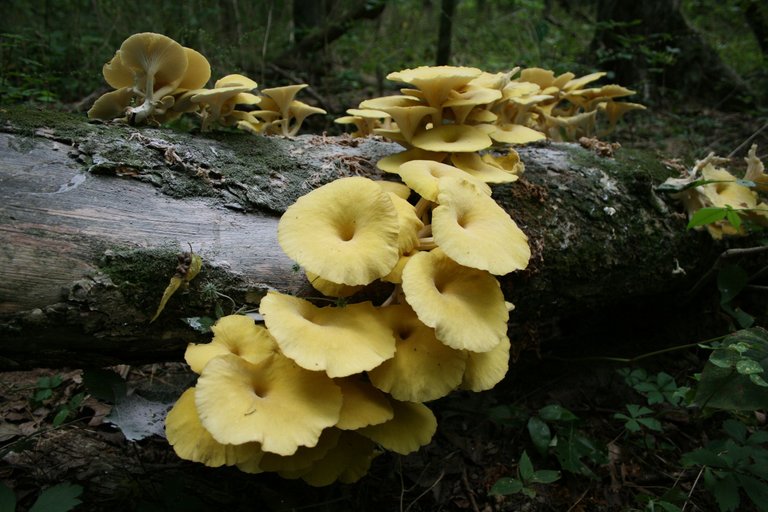Mushroom Monday - Welcome Invaders: Golden Oyster
Yesterday, I came across a non-native but welcome invader to my local forest: the golden oyster mushroom (Pleurotus citrinopileatus). Golden oysters are a choice edible fungal species that are native to the subtropical hardwood forests of eastern Russia, northern China, and Japan where they have traditionally been cultivated for both medicinal and culinary use. With bright yellow caps and bright white, decurrent gills, these saprotrophic fungi stand in stark contrast to the greens and browns of the surround forest.
With the exception of cultivation operations performed by specialty mushroom growers, this species was almost completely absent from the North American market up until the early 2000s. This being said, the species has since "escaped" from organized human-led cultivation into the hardwood forests of the eastern United States. The first recorded sighting of wild golden oysters in the United States date to around 2012; they have since spread prolifically across the northeastern quadrant of the nation. To date, golden oysters are known to grow in the states of Delaware, Illinois, Iowa, Maryland, Massachusetts, Michigan, Minnesota, New York, Ohio, Pennsylvania, and Wisconsin, though their range continues to expand. Being a choice edible species, there is some debate as to whether these fungi should be considered "invasive," though it is fair to assume that they are likely outcompeting many native fungi for resources given their rapid spread over the previous decade. More research is necessary to determine how disruptive this introduction may be to the mycodiversity of the eastern United States.
Given their delicate bright yellow caps, decurrent gills, and cespitose growth pattern, there is little chance of misidentifying this species once it has been learned. If you live the the eastern United States or their native lands of Russia, China, or Japan, keep an eye out for this tasty mushroom species!
If you would like to learn more on the naturalization of this species to the United States, please see the following master's thesis paper written by Andrea L. Bruce of the University of Wisconsin: https://minds.wisconsin.edu/handle/1793/79004
Golden Oyster (Pleurotus citrinopileatus):
My NFT Showroom gallery: https://nftshowroom.com/tych021/gallery
Creary Gallery: https://creary.net/@tych021/projects
Publish0x reflink: https://www.publish0x.com?a=M7e58kDYd2
PeakD reflink: https://peakd.com/register?ref=tych021
NFTShowroom reflink: https://nftshowroom.com/?r=tych021
Twitter: https://twitter.com/tych021
Vimm.tv: https://www.vimm.tv/tych021







These are welcome invaders indeed. I found quite a few in Wisconsin this spring near the Mississippi. They seemed to be all over the place over there. I usually get a kit and grow these each winter as well since they are more hearty and easier to grow indoors than other oyster species I've tried.
good encounter, and nice story -- enjoyed the reading. have a !PIZZA for your mushrooms.
@tych021! I sent you a slice of $PIZZA on behalf of @qwerrie.
Did you know you can earn $PIZZA through Hive-Engine Diesel Pools? (3/10)
thanx for sharing quality stuff, the post is supported by FL account upvote and nominated for #OCD curation. if you like what community is about, please consider adding FL community as beneficiary of your future posts -- lets grow together!